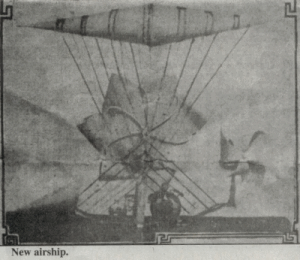
Window to the Past
Pete Backus, an Inventive Genius
By BOB HOLDGREVE
Peter J. Backus was born at New Riegel, Ohio on May 30, 1874, to Victor and Mary Backus. His mother was an artist and his father was also an inventor. His grandfather, Peter J. Backus, Sr., was a Frenchman and a hotel proprietor in Paris for 18 years.
Pete had been interested in aviation since 1892, when he experimented with a glider on the family farm, about two miles east of Bascome on, the Tiffin-Findlay road. He was 17 at the time. Be took the canvas from a threshing machine and covered a hickory framework with it. The most he could get was about 50 feet flight from the top of a straw stack. He later installed two motorcycle engines on it. When this didn't work out, he tried to get friends in Cleveland to build a light motor with which he hoped to propel his glider. They were too busy he said and he didn't get the motor. "Perhaps," he said, "It's a good thing they didn't. I probably would have landed in a heap somewhere."
As a young man, he worked as a steam engineer in New York State and Cleveland. In Cleveland he worked for the Cleveland Electric Railway and the Brown Hoisting Machine Company. He then moved to Delphos where he worked at different times for the Delphos Electric Light Plant, the Hinde and Dauch paper mill and the Henry Ricker lumber Mill.
It was not until 1896 that Otto Lillienthal, a German who was considered the chief of gliding, began to get some altitude with his own glider. He was killed during a test flight that year. This was four years after Backusí first glider attempt.
Remember, this was 10 years before the Wright Brothers flew their first airplane, that Backus was experimenting with, and attempting to perfect an air machine.
Backus worked with Glen Curtiss when Curtiss made a new record time of a mile a minute in a flight from Cleveland to Cedar Point.
In 1915, Backus supplied Curtiss with the idea of a convertible plane - one that could be changed in mid-ocean from a hydroplane to a motorboat. This plane was then built at Curtiss-Gilmore airplane factory, under the supervision of Curtiss and Backus' father-in-law. The plane was then successfully flown over the ocean.
Backus also invented an airship which he said would revolutionize aeronautics. This machine flew majestically over his home and then collapsed because of a defective mechanism. He is building a new more solid model and expects to use the machine for his own amusement.
After the Wright Brothers flew successfully, he more or less turned his attention to airplane safety, and gave up the idea of building a plane. He said, "he had been beaten to the gun.
He invented a safety device for disengaging and dropping an airplane engine with a parachute in case of a forced landing. It was so arranged that the passenger compartment would slide forward to maintain balance and act as a glider.

In 1921, Mr. Backus patented a circular landing field. There are a number of airplane safety accessories which were conceived with the landing field that he did not include in his original patent. This field with its automatic landing devices of light and radio beam control can be installed in a much smaller space. In connection with the circular airfield, Backus built a model of an airport depot that cannot be hit by a forced landing plane or a disabled plane shooting out of control. This terminal is arranged so that the plane would run up and over it, rather than crash into it. It is devised so all entrances may be closed in the event of trouble.
One of Backus' circular landing fields is in full operation at San Diego, California, which has a 3,000 foot circle, according to Backus. It was erected by the government and the Chamber of Commerce of San Diego. Circle landing is the safest for large passenger planes, and the site of the proposed Lima airport would be suitable for the circle track, according to Backus.
Another of his ideas, perfected with a thought to the future, would probably never be used unless the airplane became almost as common as the automobile, is an airplane wrecker truck.
He also is the inventor of the Ohio visible air signs, the most practical method in this district is lettering on four sides of silver painted oil tanks with 10 foot high letters. Such signs would be visible for a great distance and in all directions. The inventor disagrees with the idea of having a sign on a flat surface, declaring that during a snow storm or even heavy frost the lettering would be obliterated. "Signs on river bridges or sides of barns are all-weather markings," Backus said.
Backus has never ridden in an airplane and says he never will unless it is one built by himself, or one which is equipped with all the safety devices he has invented.
A MOST UNUSUAL INVENTION
Mr. Backus invented a device known as the, "Electric and Vacuum Testing Machine," to detect if a person is really dead.
Attention has been drawn to the subject of premature burial, and some of the leading physicians have written articles, cautioning to prevent this unspeakable horror. What would you not give to know for certain that those whom you have laid to rest are really dead.
A model of this device may be seen at the Serrels undertaking establishment on East Third Street. It consists, of an airtight receptacle, forming, so to speak, a false grave, which is heated by electricity. When the body (which has been given up or dead) has been placed within the receptacle, the air is slowly pumped out until the pressure of about 6 pounds has been reached. Then the electric current is turned on and the receptacle heated to the normal body temperature.
It has a glass window in the lid, through which the features of the person can be plainly seen, and an electric spotlight casts its reflection on the face, so that any change can be readily detected. If then the person shows any signs of life, the air is allowed to again slowly enter the receptacle, and medical aid can be applied.
This machine was placed on exhibition in Cleveland in the year 1909, and created a great deal of comments, and many expressed favorable opinions concerning it.
There is little question about its being a practical machine, and the only thing which has kept it from being placed in actual service, is the lack of financing.
Mr. Backus says he has succeeded in completing inventions for the saving of lives that will eclipse any devices yet produced.
One such device is his electro-magneto, he claims that in a -few seconds of time he can patch a leak in an ocean steamer, permitting it to complete its voyage.
The electro-magneto consists of a sheet of steel, to which batteries are attached and which are shaped to fit on any part of the ship. The batteries charge the steel sufficiently to become magnetized. According to Backus they will then have a resistance of 300 pounds to the square inch. The puncture of a cannon ball or iceberg would be repaired within a fraction of the time it would otherwise take.
Many of his inventions are on view in a big room in the cellar of his workshop. He originated the wire bushel basket and also, the Delphos retail stores are selling a self-cooling window refrigerator (first window air-conditioner ?) of his design.
In his workshop are working models of warships, traveling cranes, automobiles, airships, electric and steam cars, deep-sea diving outfits, and a bewildering array of other inventions.
"You might think it strange that I do not get most of my inventions patented," said Backus. "I don't because I feel that then they would be worked on by big corporations who make a business out of that sort of thing, and by making some changes would make my efforts useless to myself financially. I have given my life to trying to invent things that will save lives. I read the newspaper accounts of every big accident and study carefully the causes with the purpose of effecting a remedy.
Backus is unmarried, explaining that he would not encumber himself with anything that would have a tendency to take him from his workshop. (Later he would marry Mae Gould.)
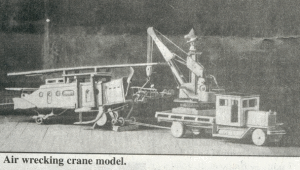
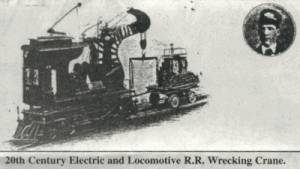
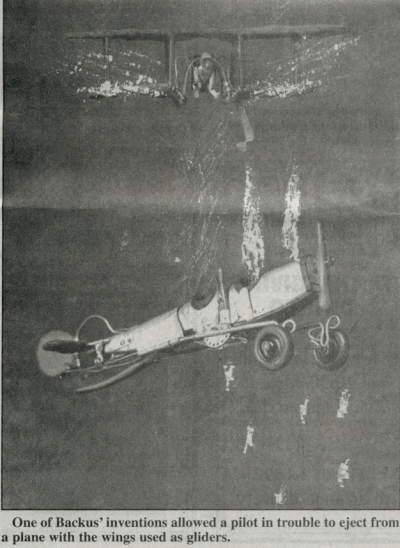
Compiled by Robert Holdgreve
Delphos Historical Society
November 23, 2002 Delphos Herald Newspaper
Pete Backus, an Inventive Genius
Part 2After a fatal accident at Scott's Crossing, Peter Backus wrote a letter to the editor of The Delphos Herald.
"Will you please tell the people this, for more safety at Scott's Crossing."
As it is today, the motorist crosses the railroad three different times. Until an overhead or underground crossing can be installed, one crossing should be plenty for the present traffic. I tried to have the highway changed to go through Scott's orchard in 1899 and this is 1927. Nothing could have saved the children's mothers lives, which were lost there last Saturday, except a bypass through Scott's orchard to cross the track on a level and parallel the traffic. This would do away with one of the most dangerous crossings in Ohio.
Probably the most universally used railroad safety invention is the flasher-light system which warns traffic that a train is approaching a grade crossing. Backus said he conceived the idea and built a working model for the original signal, back in 1905. He took the matter up with the railroads, and sent a model to New York.
No more was heard of it until one day in 1918, when Backus drove across the railroad tracks at Scott's Crossing and saw his 1905 flasher in operation. Backus said he was not equipped financially to press his claim. In connection with his crossing signal, Backus has an improvement in an indicator that informs the autoist, from which direction a train is approaching.
He also has devised a highway bumper system, (probably similar to rumble strips, that are used today at a few dangerous highway stop intersections. R.H.) to warn motorists driving through heavy fog that they are approaching a railroad. This device also has a detour accessory which sidetracks the automobile away from the tracks.
Later he completed plans for an automatic crossing gate, which he hopes to have adapted by railroads. The gates are of sufficient height so as not to come in contact with highway traffic crossing the tracks at the time the gate is coming down. A set of hanging ropes are suspended down from the gates.
Still later he built a model of crossing gates and flashing lights similar to what is used today.
Mr. Backus has invented a new type of traffic signal and invited traffic engineers to view a demonstration of the equipment.
Backus claims that if traffic signals have a black lens in a certain spot in the light they will be visible at all times, which they are not at present. In the early morning or late afternoon, with the sun in a low horizon, traffic lights cannot be seen if the sun plays on the red or green lens. At such times, motorists and pedestrians are unaware which way the light is on. The lens he has invented gives complete visibility, no matter how strongly the sun shines on the lights. The equipment is easily adapted to standard traffic signals. He has had the apparatus photographed and is showing the pictures to safety engineers.
Another in his long list of inventions is a new type of train car for labor-saving in the coal and sugar beet industries.
One more of his life-saving devices is a telephone system for the use of bus drivers as they approach railroad crossings in a snowstorm or fog.
Another device he made is a brake for use on trolley cars that is guaranteed to work automatically in times of danger, even if the motorman leaps from his post.
As a young man, Backus was a steam engineer, and worked for a time in New York and in Cleveland for the Cleveland Electric Railway and the Brown Hoisting Machine Companies. He then moved to Delphos where he worked at different times for the Delphos Electric Light and Power Company, the Hinde & Dauch paper mill and the Henry Ricker lumber mill.
Backus is widely known in Allen County and other communities for the ingenuity of his inventions and many labor saving devices.
He has many working models of power machinery in his workshop at his home at 70 S. Washington street. They have been inspected by many, the visitors comprising engineers and school students, out-of-town classes attending the shop in a body.
Backus is known to Delphos residents, young and old as, "Old Pete".
The Delphos inventor, like Edison, sleeps but little. His mind is busy with ideas and plans. Putting these ideas into working models has become an obsession with him. Once an idea germinates, he cannot wait until it has been given a thorough trial.
13,000 Volts of Electricity
P.J. Backus, a night engineer at the Delphos Light and Power Company, had a narrow escape from instant death when he received a heavy electric shock from high tension wires at the light plant, and that he was not instantly killed is a little short of miraculous.
At the time, he was wiping dust from the insulators, when his right hand came in contact with a 13,000 volt wire. He was knocked down with heavy force and landed against a large generator, a few feet behind him. Although he was dazed for a short time, he was able to walk to his home.
The voltage entered his right hand and exited out of his left side near the hip. His right hand was badly burned, and a hole was burned in his left side. His clothing was also burned.
Mr. Backus may be considered very lucky, as the cases on record in which a person has received such a voltage without producing death is very rare.
Delphos inventor dies
Pete J. Backus, widely-known mechanic and inventor, dies. He was born May 30, 1874 and died June 25, 1942. For the past four years he was a stationary engineer at Ricker's Planing Mill.
On Thursday morning, he got up to go to work, but was feeling ill. Mrs. Backus persuaded him to remain at home and a short time later he fell unconscious and died.
He is survived by his widow; a step-son Charles Gould, at home, two step-grandchildren; and a step-great-grandchild. Three brothers and two sisters also survive; Jacob, north of Delphos; Adam, George and Mrs. William Helbley, all south of Delphos; and Mrs. Isaac Crider, East Jackson Street.
This information was obtained from Louise Williams, Jerry Backus, and the late Richard Schwinnen. Pete Backus was their great-uncle.
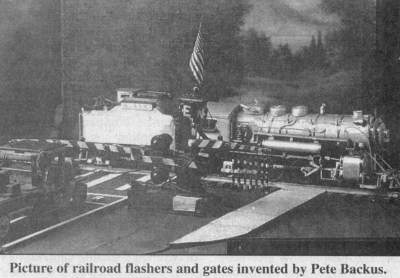
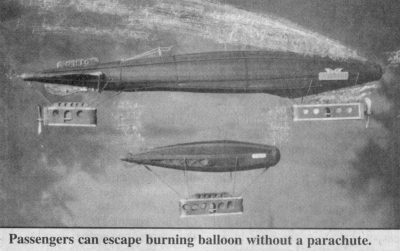
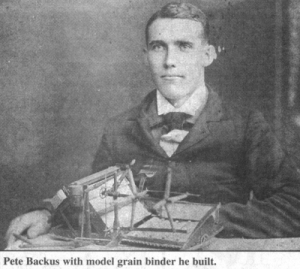
Compiled by Robert Holdgreve
Delphos Historical Society
December 21, 2002 Delphos Herald Newspaper